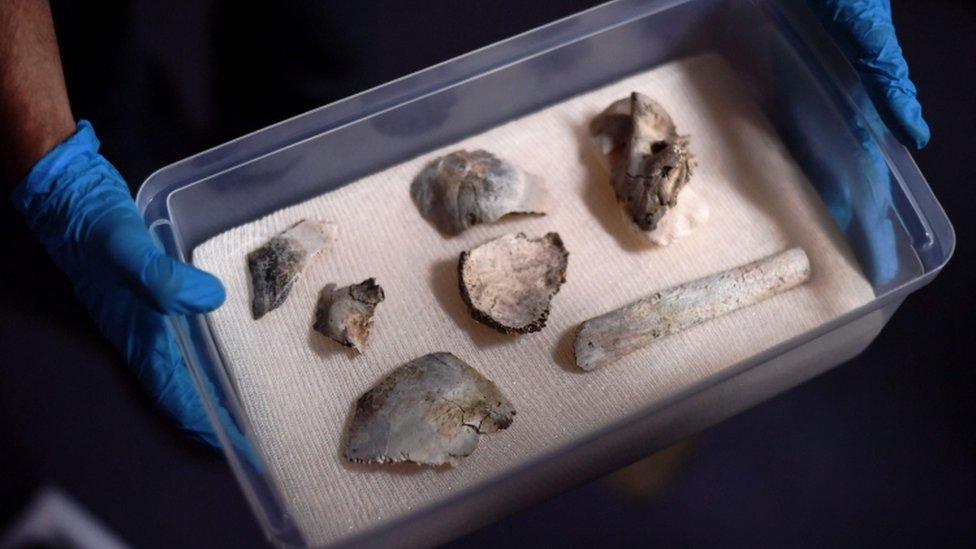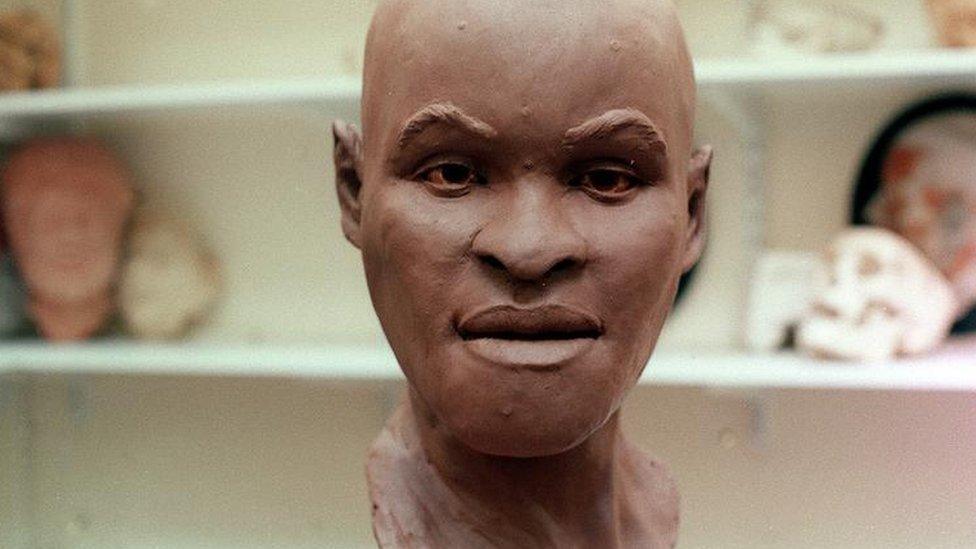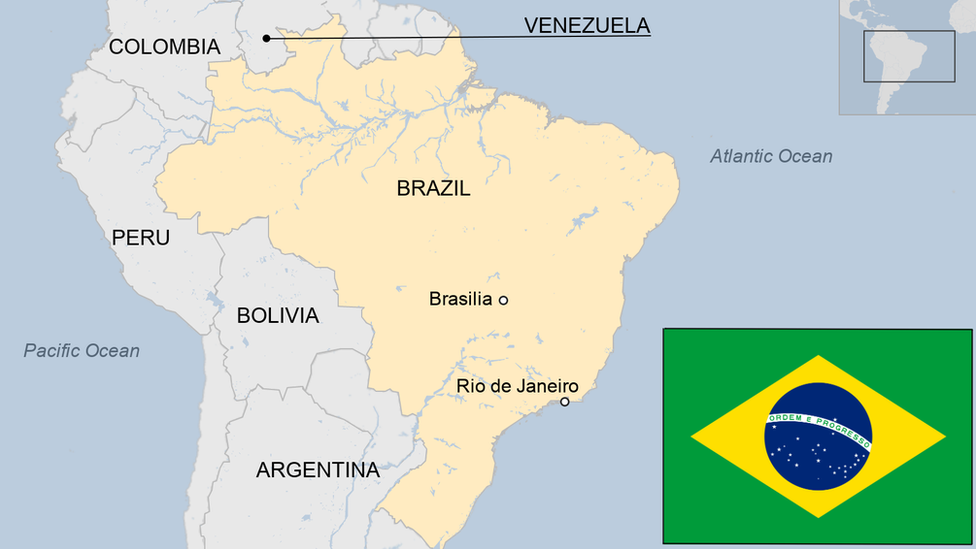Brazil museum fire: Prized 'Luzia' fossil skull recovered
- Published
Drone footage shows the National Museum totally gutted.
Most of the skull from a prized 12,000-year-old fossil nicknamed Luzia has been recovered from the wreckage of a fire in Brazil's National Museum.
The 200-year-old building in Rio de Janeiro burned down in September, destroying almost all of its artefacts.
But on Friday the museum's director announced that 80% of Luzia's skull fragments had been identified.
The human remains - the oldest ever found in Latin America - were viewed as the jewel of the museum's collection.
The museum staff said they were confident they could recover the rest of Luzia's skull and attempt reassembly.
"They've suffered alterations, damage but we're very optimistic at the find and all it represents," archaeologist Claudia Rodrigues was quoted as saying by the AFP news agency.

The remains saved from the rubble were presented to press on Friday
The skull is understood to have been stored in a metal box inside a cabinet, described as a "strategic place", which helped it resist fire damage.
Structural work to secure the historical palace in the Brazilian city is still being carried out almost 50 days on from the fire.
The cause of the blaze - which tore through hundreds of rooms containing more than 20 million artefacts - is still under investigation.
The 2 September fire sparked criticism and protests of the country's government in its aftermath.
The museum is managed by Federal University of Rio de Janeiro, whose rector said they had known the building was vulnerable because of financial cuts.

Luzia's face was reconstructed by a team at Manchester University in 1999
Luzia's remains were found in a cave in the 1970s in the state of Minas Gerais, north of Rio, by French archaeologist Annette Laming-Emperaire.
Tests suggest the skull and bones belonged to a woman in her 20s who was just under 1.5m (5ft tall) - and they were believed to be the oldest recovered on the continent.
Experts had produced a digital image of her face using her skull, which was used as the basis for a sculpture that was also in display on the building.
Luzia was named in homage to Lucy - the famous and important 3.2 million-year-old human remains found in Africa in 1974.
- Published3 September 2018
- Published3 September 2018

- Published1 May 2018

- Published2 June 2023
